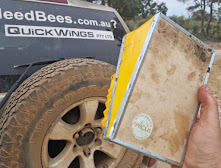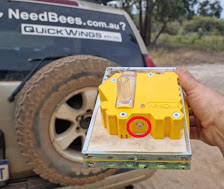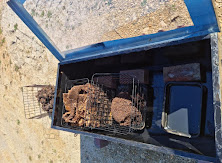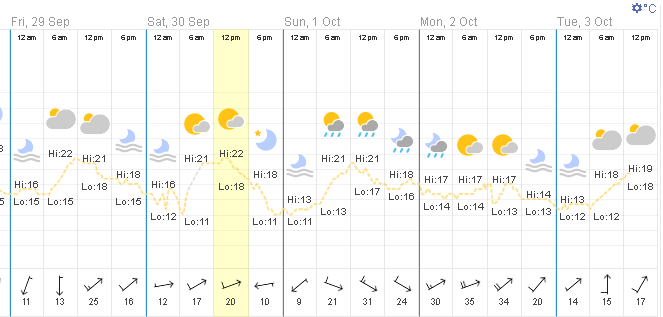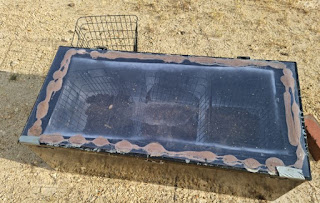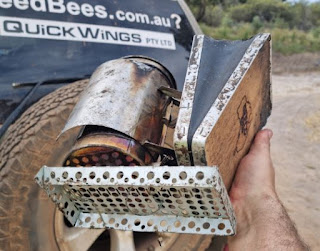The intent of this blog post is to give you an overview into all sorts of methods on how people tend to handle bees. We have tested most of what we show on the blog, if not we will call it out.
Let us know how you handle your bees, let us know what we are missing!
Traditional smokers:
There is nothing like a traditional bee smoker when it comes to beekeeping! Very reliable and works with all sorts of hive sizes, from tiny swarms, NUCs and even large production colonies or pallets worth of colonies.
Bee-Z-Smoker:
We had tried the Bee-Z-Smoker which operates on batteries and heats up a metal wire, which is intended to smolder wood shavings as smoker fuel. If I remember correctly the battery did not last very long, its powered by rather heavy batteries, unsure if they are lithium or not, but they felt heavy. It does work, a few seconds after pushing both buttons it generates cool smoke. Its not super thick smoke, but plenty to work the bees.
Sugar Water:
In europe many beekeepers rely on spraying the bees with sugar water to enforce them to clean themselves and are taken out of the "action" as such. I'm not sure how one moves bees out the way using sugar water mist as I would imagine that sugar water is mainly used in combination with swarms, but I might be wrong. I myself do not use Sugar Water in our operation.
Essential oils and water misters:
We had just recently tested using essential oils and water mist spray.
Tea trea oil:
Bees seem uncoordinated in defending, still upset but not sitting on your sleeves stinging you to death.
Spearmint oil:
Spearmint had been said to be beneficial while one should stay away from lemon or banana scented essential oils, however we are still waiting for our supply to arrive and will update the blog once tests have been conducted.
Liquid Smoke:
We tried this in order to work the bees on harvest ban days, as we had our bees stationary and could literally walk to the hives. We tried this, however upset hives do not seem to react as intended. When accidentially sprayed onto hands and sleeves, we noticed that bees tended to avoid that area, so partially it seemed to work, just not so well on one of the really upset hives. The liquid would probably be sprayed just like the sugar water.
Food Smokers:Food smokers sometimes can be handy assuming you are working with NUCs in bee house settings or similar and solely need to direct the bees from their frames or edges and need tiny amounts of smoke.


APISOLIS:We have tested and introduced APISOLIS in October 2023 and it seems to be handy for NUCs however we used it on a day where one of our bee sites had not yet been slashed and the grass / hay was all around the hives at nearly knee height while the outside temperature was already around 35C and very dry.
It would have been way too dangerous to light a smoker that day, and use it on that site in that setting, hence we were quite surprised on how well it worked on our production hives. However, keep in mind that our hives are fairly well behaved, and we got away on production colonies on the hot day. However, one seems to go through quite a bit of fluid.
What we usually do is to add the magnetic charger knobs as beekeeping equipment and bees wax / propolis and usb charging ports don't do well in our experience.
If we missed a major gadget or you may have an idea you would like to share with us, please contact us and let us know an what you are using to calm down your bees.
